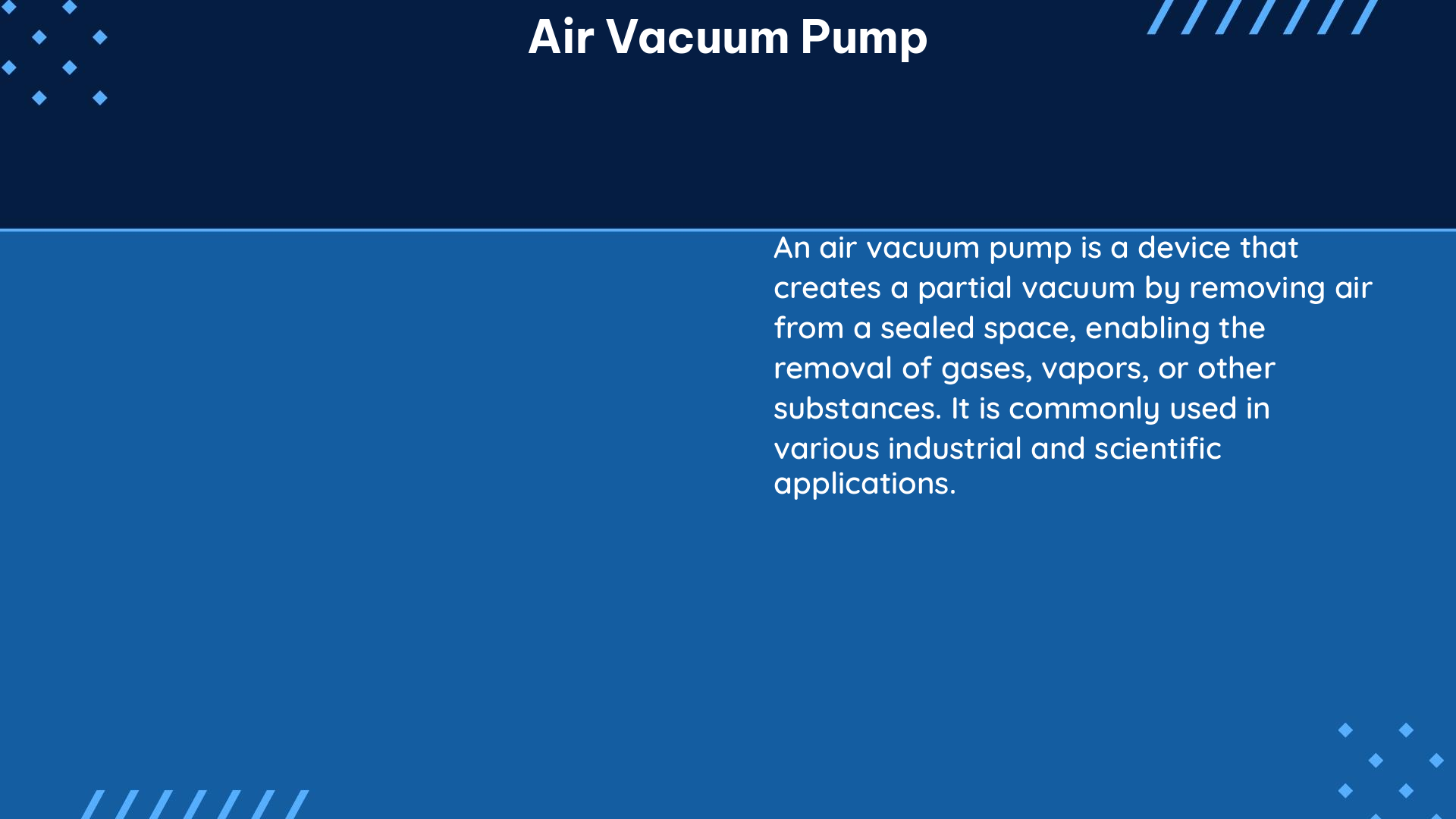An air vacuum pump is a versatile device used to create a vacuum by removing air or other gases from a sealed chamber. Understanding the performance characteristics of an air vacuum pump is crucial for selecting the right one for your application and ensuring optimal operation. This comprehensive guide delves into the intricacies of air vacuum pump performance, equipping you with the knowledge to make informed decisions and achieve the desired results.
Measuring Air Vacuum Pump Performance
The performance of an air vacuum pump can be evaluated through several key metrics:
Flow Rate
Flow rate is a measure of the volume of air that the pump can move in a given time period, typically expressed in liters per minute (LPM) or cubic feet per minute (CFM). This parameter is crucial in determining the pump’s ability to quickly evacuate a chamber or system.
Pumping Speed
Pumping speed is a measure of how quickly the pump can reduce the pressure in a chamber, also typically measured in LPM or CFM. This metric is essential in understanding the pump’s efficiency in achieving the desired vacuum level.
Ultimate Vacuum Level
The ultimate vacuum level is a measure of the lowest pressure that the pump can achieve, typically expressed in pascals (Pa) or torr. This parameter is crucial in applications that require a high-vacuum environment.
Measuring Pump Performance Using a Test Manifold

One effective method for evaluating the performance of an air vacuum pump is to use a test manifold with a series of critical flow orifice plates. This approach involves measuring the pressure drop across each orifice plate and using the data to calculate the flow rate and pumping speed of the pump. By plotting the performance curve of the pump, it is possible to assess factors such as temperature, backpressure, and air leakage that can affect pump performance.
Removing Incondensable Gases
Another important consideration when selecting an air vacuum pump is its ability to remove incondensable gases, such as air, from a system. The capacity of a vacuum pump to remove incondensable gases is typically quoted in kilograms per hour (kg/hr) and depends on the operating conditions of the system, such as the absolute pressure and temperature. To properly size a vacuum pump, it is necessary to convert the estimated mass flow of incondensable gases into a volumetric flow at the operating conditions of the system, and to account for any condensation that may occur within the pump due to seal water that is colder than the incondensable gas stream.
Factors Affecting Pump Performance
When testing a vacuum pump, it is crucial to eliminate or quantify any outside factors that could affect pump performance, such as atmospheric pressure. Pump manufacturers often provide graphs to determine the necessary correction factors for seal water temperature and condensation within the pump.
Key Considerations for Selecting and Testing an Air Vacuum Pump
When selecting and testing an air vacuum pump, consider the following factors:
- Flow Rate: Ensure the pump’s flow rate matches the requirements of your application.
- Pumping Speed: Evaluate the pump’s ability to quickly reduce pressure in your system.
- Ultimate Vacuum Level: Verify that the pump can achieve the desired vacuum level for your needs.
- Incondensable Gas Removal: Assess the pump’s capacity to remove unwanted gases from your system.
- Environmental Factors: Account for temperature, backpressure, and air leakage that may affect pump performance.
By understanding and addressing these key performance metrics, you can select the most suitable air vacuum pump for your application and ensure optimal operation.
Conclusion
Air vacuum pumps are versatile and essential tools for a wide range of applications. By mastering the concepts of flow rate, pumping speed, ultimate vacuum level, and incondensable gas removal, you can make informed decisions when selecting and testing an air vacuum pump. This comprehensive guide has provided you with the technical knowledge and practical insights to effectively utilize air vacuum pumps and achieve the desired results in your projects.
References:
- MEASURING VACUUM PUMP PERFORMANCE
- Measuring the quantity of incondensable gas removed by a liquid…
- Proc S Afr Sug Technol Ass
- Course Hero

The lambdageeks.com Core SME Team is a group of experienced subject matter experts from diverse scientific and technical fields including Physics, Chemistry, Technology,Electronics & Electrical Engineering, Automotive, Mechanical Engineering. Our team collaborates to create high-quality, well-researched articles on a wide range of science and technology topics for the lambdageeks.com website.
All Our Senior SME are having more than 7 Years of experience in the respective fields . They are either Working Industry Professionals or assocaited With different Universities. Refer Our Authors Page to get to know About our Core SMEs.